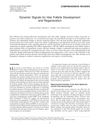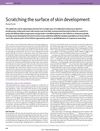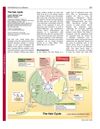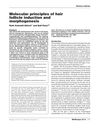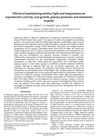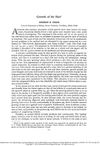Growth and Viability of Liaoning Cashmere Goat Hair Follicles During the Annual Hair Follicle Cycle
January 2014
in “
Genetics and Molecular Research
”
hair follicle cycle anagen phase catagen phase telogen phase primary hair follicles secondary hair follicles hair bulb width skin thickness dermal thickness dermis to epidermis ratio hair follicle density hair growth cycle growth phase regression phase resting phase PHF SHF hair bulb size skin layer thickness skin layer ratio follicle density
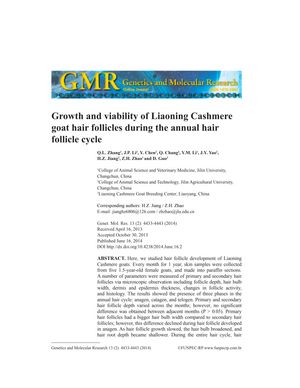
TLDR Liaoning Cashmere goat hair follicles show synchronized growth patterns with lowest activity in May.
In the 2014 study, researchers examined the hair follicle cycle of Liaoning Cashmere goats by analyzing skin samples from five 1.5-year-old female goats each month over a year. They observed the anagen, catagen, and telogen phases and measured follicle depth, hair bulb width, and skin thickness. Primary hair follicles (PHF) generally had a larger hair bulb width than secondary hair follicles (SHF), with the difference diminishing during the anagen phase. The depth of both PHF and SHF varied throughout the year without significant differences between adjacent months. Secondary hair follicles exhibited higher activity rates than PHFs in certain months. The study found that the maximum dermal thickness occurred in August, and the dermis to epidermis ratio peaked in July. Hair follicle density and the secondary to primary follicle ratio remained consistent across months. PHF activity was highest in January and lowest in May, while SHF activity decreased significantly from February, reaching a minimum in April, then increased significantly in July and August. The study concluded that hair follicle activity, depth, density, and dermal thickness were positively correlated and lowest in May, indicating a synchronized hair follicle development cycle in these goats.
